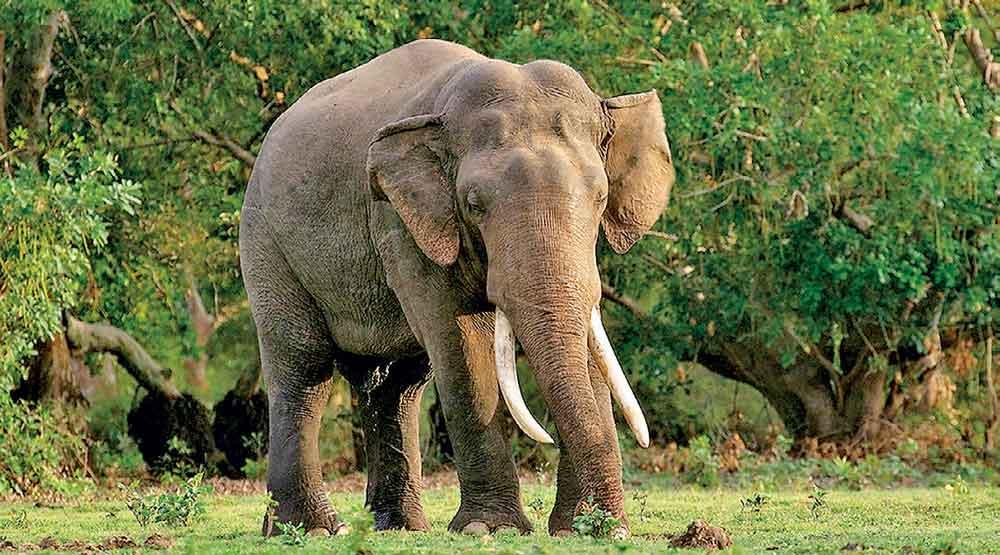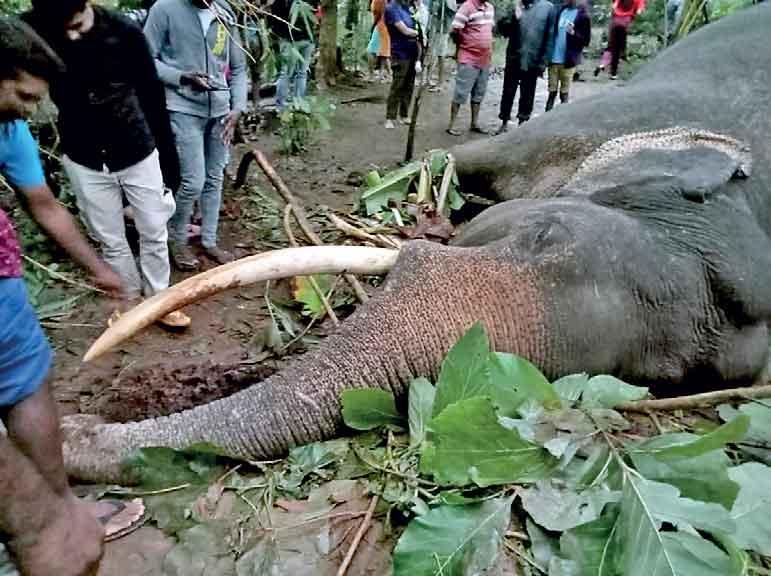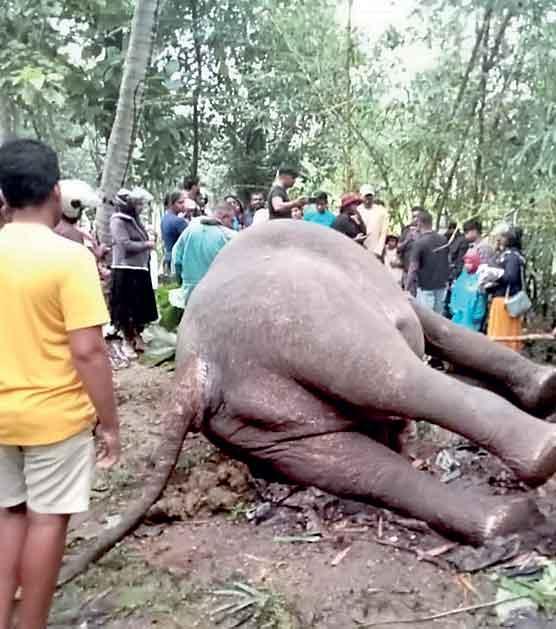Reply To:
Name - Reply Comment


Kenyan government deployed rangers 24 hours to protect legendary Tusker, Ahmed. However, Deegha, our last elephant with the largest pair of tusks died untimely without any such attention
On average 405 elephants have died annually in
Sri Lanka
Economic value of a wild elephant to Sri Lanka
tourism is close to Rs 4 million. However, such valuable animals are being killed without any accountability daily
 We are miserable to see history repeat in such a tragic way and the victim this time is the largest tusker that remained in the Kalawewa National Park ‘Deeghadanthu 1’, who was electrocuted and killed inhumanely on the night of the November 27. This was not a coincidence, but an extension of the experiences by famed Tuskers in this area such as Barana, Revatha, and Walagambha for years. The forests around the Kalawewa National Park are where many Tuskers reported in the wild in this country. However, this was the Tusker that remained in the area with the largest tusks, this valuable majestic resource has now been lost to our country, and if we can learn a lesson from his loss at least at this moment, it will be better for the future generations of the likes of Deeghadanthu.
We are miserable to see history repeat in such a tragic way and the victim this time is the largest tusker that remained in the Kalawewa National Park ‘Deeghadanthu 1’, who was electrocuted and killed inhumanely on the night of the November 27. This was not a coincidence, but an extension of the experiences by famed Tuskers in this area such as Barana, Revatha, and Walagambha for years. The forests around the Kalawewa National Park are where many Tuskers reported in the wild in this country. However, this was the Tusker that remained in the area with the largest tusks, this valuable majestic resource has now been lost to our country, and if we can learn a lesson from his loss at least at this moment, it will be better for the future generations of the likes of Deeghadanthu.
One of the main reasons for declaring Kalawewa National Park and conserving the natural eco systems around Kala-Baalu reservoirs was the abundance of large tuskers such as Barana, Revatha, Walagambha, and Deegha as mentioned above. Statistics show that the tusker percentage is much higher in this area when compared to other elephant home ranges in the country. However, due to a hydropower project, the reservoirs were kept full over the past years, and the elephants living in this area were confined to a small strip of forests around the national park. The situation became even worse when the Moragahakanda Irrigation Project supplied water to Kalawewa. The elephants in this area usually use the tank beds during the dry seasons to feed on lush green grasses that emerge when the water level goes down, similar to the great elephant gathering in Minneriya National Park. Furthermore, the spread of invasive alien floral species such as Agada, and herding of cattle inside the protected area led to a severe food shortage for the elephants. Therefore, the elephants including Deegha were forced to enter into villagers and cultivations to find food, and this is how the failure to pay attention to such factors in the so-called environmental impact assessments conducted before the implementation of development projects has resulted in the Deegha’s untimely demise.
Elephant Deaths Remain Unaddressed
In addition, the three main causes of elephant deaths including gunshots, electrocution, and Hakka Patas, which account for more than 60 percent of the elephant mortalities remain unaddressed. It is heartbreaking to say that the Department of Wildlife Conservation, the Ceylon Electricity Board, and the Police have not yet implemented any positive, collective program to prevent these electrocutions. This approach should consist of raising awareness, strict law enforcement, and raids to expose unprotected power lines. The fact that four huge Tuskers were electrocuted and killed in this region in a very short period provides clear evidence for the lack of collaborative action.

Electricuted Tusker Deeghadanthu 1
On the other hand, the government has no integrated program other than passing the ball to the Department of Wildlife Conservation to mitigate human-elephant conflict, which is one of the largest socio-economic, environmental, and political problems in Sri Lanka. The National Action Plan for the Mitigation of Human-Elephant Conflict in Sri Lanka, which proposes such an integrated scientific approach, has been pigeonholed for four years.
The government failed to appoint a Presidential Task Force to implement the action plan since December 2020. As a result, the country is losing one or two members of these precious majestic elephants daily. The situation regarding the other party of this conflict, humans, is also tragic. In the past five years, on average 405 elephants have died annually, while 138 human lives have been lost due to this conflict. There are no accurate estimates of the number of morbidities and property damages resulting from this conflict. No ruler has ever thought about the social issues and mental health problems that have arisen in conflict-prone areas. These are the concerns raised by the poor electrocuted elephant.
Main Attraction for Tourists
In 2018 (before the April 21 attacks and the COVID-19 pandemic hit the tourism industry), 47% of all tourists who came to the country visited Sri Lanka’s national parks. In the first quarter of 2024 alone, the country’s national parks generated Rs. 2,000 million in revenue for the government (source: Department of Wildlife Conservation). Elephants are the main attraction for these tourists. According to studies by Srilal Miththapala, a tourism expert, the overall economic value of a single wild elephant to Sri Lanka tourism is close to Rs. 4 million. However, such valuable animals are being killed without any accountability daily.

Photo credit: Saranga Deva de Alwis
Although Deegha is just another elephant for the Department of Wildlife Conservation in this country, it is not the case in other countries. For example, the Kenyan government deployed rangers 24 hours to protect the legendary Tusker,Ahmed. However, Deegha, the last elephant with the largest pair of tusks reported to live in the forest area surrounding Kalawewa National Park, died untimely and without any such attention.
We should not be surprised by this sleepy behaviour of the Department of Wildlife Conservation, because it has only 882 officers who can enforce the Wildlife Protection Act and administrate more than fifteen percent (15%) of the country’s total land area. Out of the approved carder of 1591, which is not sufficient at all, forty-five percent (45%) remain vacant.In such a context, nothing more can indeed be expected regarding the conservation of Deegha’s descendants as well as the whole wildlife of the country. Therefore, it would be great if Deegha’s death could be used as a basis for taking prompt action to change this unfortunate fate, even under the current government.